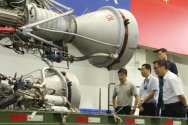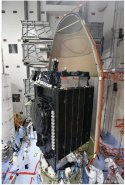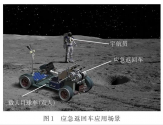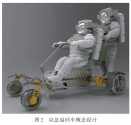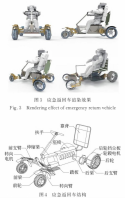Can someone explain why this is an important achievement? I'm pretty sure CZ rockets have multiple engines in a cluster on the main stage. CZ-2F for example has 4 engines on the main stage.7) The first Chinese launch vehicle to have a three-engine cluster on the same motor mount.
You are using an out of date browser. It may not display this or other websites correctly.
You should upgrade or use an alternative browser.
You should upgrade or use an alternative browser.
China's Space Program Thread II
- Thread starter Blitzo
- Start date
It's not an achievement per se, but a first. And it was posted in that exact context too.Can someone explain why this is an important achievement? I'm pretty sure CZ rockets have multiple engines in a cluster on the main stage. CZ-2F for example has 4 engines on the main stage.
by78
General
Some updates from the private launch provider .
1) The Storm-5A (风暴-5A) engine is currently undergoing testing and and further iterations.
2) The sixth engineering prototype (RLV-T6) of the suborbital reusable RLV family has completed launchpad integration.
3) Main engine test run has been completed for a prototype lunar lander.





1) The Storm-5A (风暴-5A) engine is currently undergoing testing and and further iterations.
2) The sixth engineering prototype (RLV-T6) of the suborbital reusable RLV family has completed launchpad integration.
3) Main engine test run has been completed for a prototype lunar lander.





by78
General
More on the coal-derived kerosene fuel that was used in yesterday's launch of Tianlong-2.
Traditionally, kerosene used by China's space program is refined from petroleum, and not just any petroleum: only naphthenic crude from the Karamay oil field in Xinjiang is deemed suitable. However, with increasing demand for kerosene from China's space industry, supply depletion is a real threat. Naphthenic crude is also available from foreign sources, such as Russia, but for reasons of strategic security, China began pursuing alternative sources.
The 165th Institute of the Sixth Academy of CASIC took the lead and discovered that certain fuel oils produced from coal liquefaction are chemically suitable for producing aerospace grade kerosene. Since 2016, in cooperation with China Energy Investment Corporation, the 165th Institute has successfully developed an industrial process for deriving aerospace kerosene from coal and set up an annual production capacity of 5,000 tons of kerosene, to be expanded to 30,000 tons during the 14th Five-Year Plan.
Interestingly, the 165th Institute didn't stop there. It has also cooperated with Shaanxi Coal Group to develop an industrial process for producing kerosene from tar oil.
Images below show the team from the 165th Institute at the launch site of Tianlong-2.





Traditionally, kerosene used by China's space program is refined from petroleum, and not just any petroleum: only naphthenic crude from the Karamay oil field in Xinjiang is deemed suitable. However, with increasing demand for kerosene from China's space industry, supply depletion is a real threat. Naphthenic crude is also available from foreign sources, such as Russia, but for reasons of strategic security, China began pursuing alternative sources.
The 165th Institute of the Sixth Academy of CASIC took the lead and discovered that certain fuel oils produced from coal liquefaction are chemically suitable for producing aerospace grade kerosene. Since 2016, in cooperation with China Energy Investment Corporation, the 165th Institute has successfully developed an industrial process for deriving aerospace kerosene from coal and set up an annual production capacity of 5,000 tons of kerosene, to be expanded to 30,000 tons during the 14th Five-Year Plan.
Interestingly, the 165th Institute didn't stop there. It has also cooperated with Shaanxi Coal Group to develop an industrial process for producing kerosene from tar oil.
Images below show the team from the 165th Institute at the launch site of Tianlong-2.





More on the coal-derived kerosene fuel that was used in yesterday's launch of Tianlong-2.
Traditionally, kerosene used by China's space program is refined from petroleum, and not just any petroleum: only naphthenic crude from the Karamay oil field in Xinjiang is deemed suitable. However, with increasing demand for kerosene from China's space industry, supply depletion is a real threat. Naphthenic crude is also available from foreign sources, such as Russia, but for reasons of strategic security, China began pursuing alternative sources.
The 165th Institute of the Sixth Academy of CASIC took the lead and discovered that certain fuel oils produced from coal liquefaction are chemically suitable for producing aerospace grade kerosene. Since 2016, in cooperation with China Energy Investment Corporation, the 165th Institute has successfully developed an industrial process for deriving aerospace kerosene from coal and set up an annual production capacity of 5,000 tons of kerosene, to be expanded to 30,000 tons during the 14th Five-Year Plan.
Interestingly, the 165th Institute didn't stop there. It has also cooperated with Shaanxi Coal Group to develop an industrial process for producing kerosene from tar oil.
Images below show the team from the 165th Institute at the launch site of Tianlong-2.
郭德纲:内行要是与外行去辩论那是外行。比如我和火箭科学家说,你那火箭不行,燃料不好,我认为得烧柴,最好是煤,煤最好选精煤,水洗煤不好。如果那个科学家拿正眼看我一眼,那他就输了
郭德纲’s joke is coming true!
Last edited:
This is actually quite interesting design because I recall with Apollo moon buggy the requirement was the car cannot travel further than the distance that Astronaut can walk back to the lander before their oxygen runs out, so although in theory the car could go much further in reality it still wasn't that far from the lander.Cute design. Hope they never have to use it.
View attachment 110428
View attachment 110429
View attachment 110430
Having a backup scooter would solve that problem.

